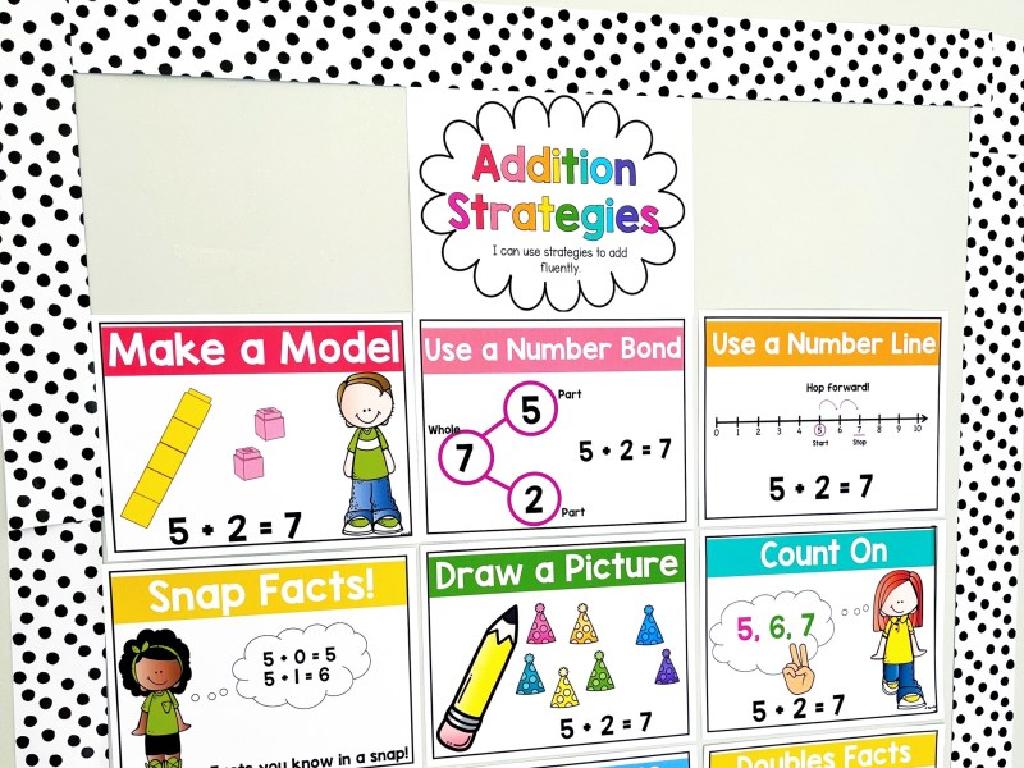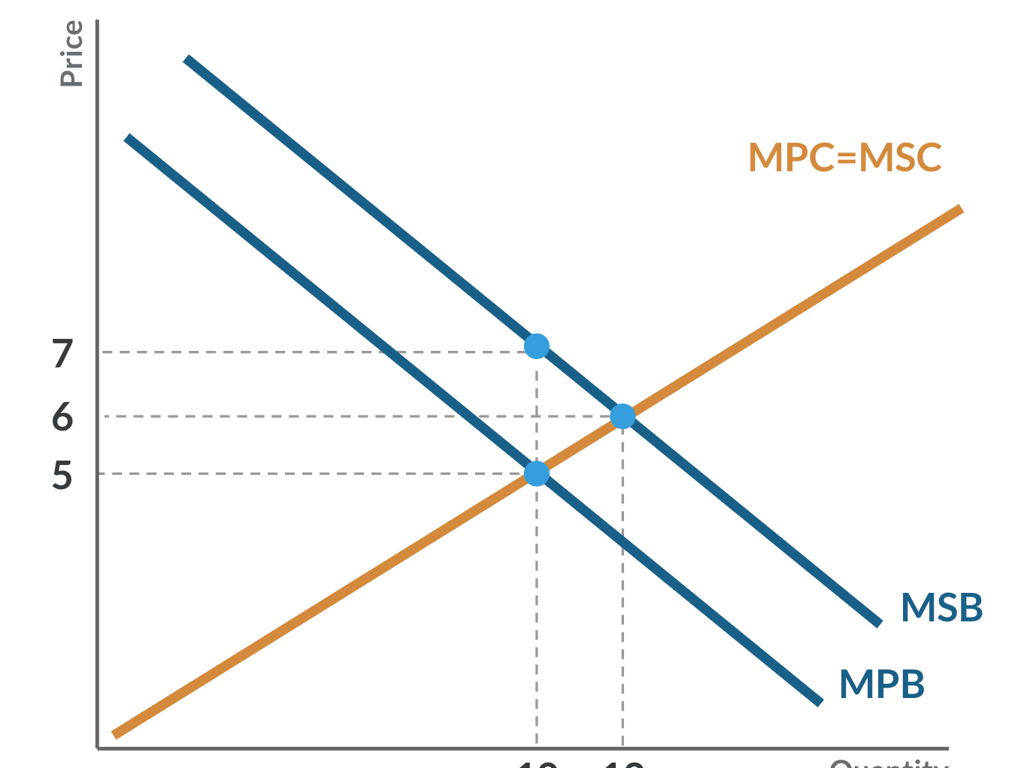Create Line Plots
Subject: Math
Grade: Sixth grade
Topic: Data And Graphs
Please LOG IN to download the presentation. Access is available to registered users only.
View More Content
Creating Line Plots
– Organizing data effectively
– Sorting data helps us see patterns and make predictions.
– Visual representations in math
– Graphs turn numbers into pictures for easier understanding.
– Steps to create a line plot
– Gather data, choose a scale, plot points, and connect them.
– Practice with real data
– Use class survey results to create your own line plot.
|
This slide introduces the concept of line plots and their role in organizing data visually. Emphasize the importance of sorting data to recognize patterns and predict trends. Explain how visual representations like graphs can simplify complex data and make it more accessible. Walk through the steps of creating a line plot: collecting data, deciding on a scale, plotting individual data points, and connecting them with lines. Encourage students to practice by using data from a class survey or experiment to create their own line plots, reinforcing the concepts with hands-on experience.
Understanding Line Plots
– Define a line plot
– A graph using a number line to display data
– ‘X’ marks frequency of data
– Each ‘X’ above a number shows how often it appears
– Visualize data spread
– Shows how data is distributed across values
– Useful for numerical data
– Ideal for comparing amounts or measurements
|
A line plot is a simple yet powerful tool for displaying data in a visual format that is easy for sixth graders to understand. It uses a number line to represent the range of data and ‘X’s to show the frequency of each data point. This type of plot is particularly effective for showing the distribution or spread of numerical data, such as test scores, measurements, or counts of items. When teaching this concept, emphasize the importance of accurate plotting and how each ‘X’ corresponds to an occurrence of a data point. Encourage students to create their own line plots using data from classroom activities or their own collections.
Key Components of a Line Plot
– Number line: Scale representation
– A horizontal line with numbers to measure data
– Data points: Specific values
– Individual measurements or occurrences
– X marks: Frequency of data points
– Each ‘X’ represents one occurrence of a data value
– Interpretation: Understanding the plot
– Analyze the distribution and range of data
|
This slide introduces the fundamental elements of a line plot, which is a type of graph used to display data along a number line. Start by explaining the number line, which serves as the base for the plot and provides a scale that represents the range of data. Then, move on to data points, which are the specific values or measurements from the data set. Each data point is marked on the plot with an ‘X’. The frequency of each data point is shown by stacking ‘X’ marks above the corresponding value on the number line. Finally, discuss how to interpret a line plot by looking at the spread of the ‘X’ marks to understand the distribution and range of the data. Encourage students to practice by creating their own line plots using data from classroom activities or homework.
Creating Our Line Plot
– Collect and list data
– Gather data from an experiment or survey
– Determine scale and intervals
– Choose a scale that fits your data range on the number line
– Plot data points with X marks
– Mark each data point above its value on the number line using an X
|
This slide is designed to guide students through the process of creating a line plot. Start by having students collect data from a class experiment or survey. Once the data is collected, they should list it to see the range and frequency of data points. Next, instruct students on how to determine an appropriate scale and intervals for their number line, ensuring that all data points will be represented accurately. Finally, students will plot their data by placing an X above the corresponding value on the number line for each data point. Encourage students to double-check their plots for accuracy. For the activity, consider having students collect data on a topic of interest, determine the scale, and create their own line plots. Provide several examples of different scales and intervals to cater to varied data ranges.
Class Activity: Line Plots with Shoe Sizes
– Collect shoe sizes from classmates
– Record the data systematically
– Tally the sizes on a chart or list
– Create a line plot as a class
– Mark the frequency of sizes on a number line
– Analyze our shoe size distribution
– Discuss patterns or trends in the data
|
This class activity is designed to provide hands-on experience with line plots. Start by having each student share their shoe size, and then record this data in a way that’s visible to the whole class, such as on the board or a large piece of paper. Next, guide the students in creating a line plot on the board, marking an ‘X’ above the corresponding number on a number line for each shoe size recorded. Once the line plot is complete, lead a discussion with the class to analyze the data. Talk about the most common shoe sizes, the range of sizes, and any other interesting observations. This will help students understand how line plots represent data and how to interpret them. For differentiation, consider having students work in small groups or pairs to create their own line plots using the collected data.
Interpreting Line Plots
– Analyzing line plot insights
– What story does the plot tell us about the data?
– Finding the mode in data
– The mode is the most frequently occurring data point.
– Exploring range and distribution
– Range shows the spread of data; distribution shows how data is spread out.
– Discussing data variability
– Variability tells us how much the data points differ from each other.
|
This slide aims to teach students how to interpret the information presented in a line plot. Students should learn to analyze the plot to understand the story it tells about the data, such as trends or patterns. They should be able to identify the mode, which represents the most common value in the data set. Understanding the range will help them see the span from the lowest to the highest value, while distribution will give them an idea of how the data points are organized along the number line. Discussing variability will help students understand how similar or different the data points are. Encourage students to practice by creating their own line plots and interpreting them in class.
Class Activity: Crafting Line Plots
– Measure classroom objects
– Record lengths accurately
– Create a line plot with data
– Use a ruler to measure, then plot points on a graph where the x-axis represents object names and the y-axis represents lengths.
– Present findings to class
|
This activity is designed to provide hands-on experience with line plots. Students will measure various objects in the classroom using a ruler and record these measurements. They will then use this data to create a line plot, ensuring they understand how to represent data visually. The x-axis of their line plot should list the objects measured, while the y-axis should represent the length of these objects. Once completed, students will share their line plots with the class, explaining their findings and observations. For the teacher: Prepare a list of diverse objects for measurement to cater to different student preferences. Ensure rulers are available for all students. Consider grouping students for collaborative learning. Have a discussion afterward to talk about the variation in data and what it represents.
Conclusion: Mastering Line Plots
– Recap creating & interpreting line plots
– We reviewed steps to make line plots and how to read them.
– Understand line plots usefulness
– Line plots help us see data trends and distributions easily.
– Anticipate comparing data using line plots
– Tomorrow, we’ll learn to compare different sets of data.
– Review today’s key takeaways
|
As we wrap up today’s lesson, ensure students are comfortable with the process of creating and interpreting line plots. Emphasize the importance of line plots in visualizing data, spotting trends, and making comparisons. Prepare them for the next lesson by hinting at how line plots can be used to compare different data sets, which will deepen their understanding of data analysis. Review the key points from today’s lesson and answer any lingering questions to solidify their knowledge.






